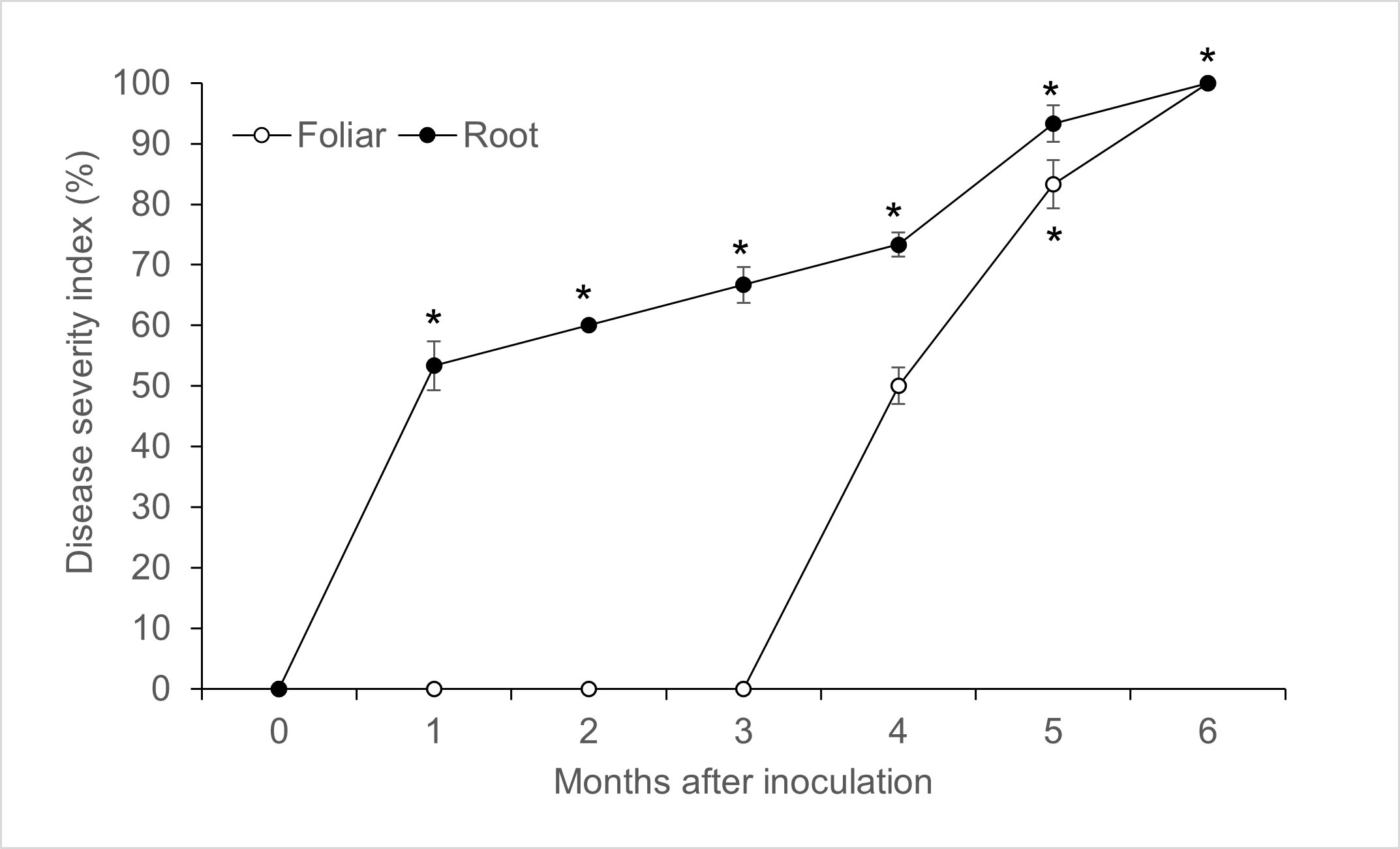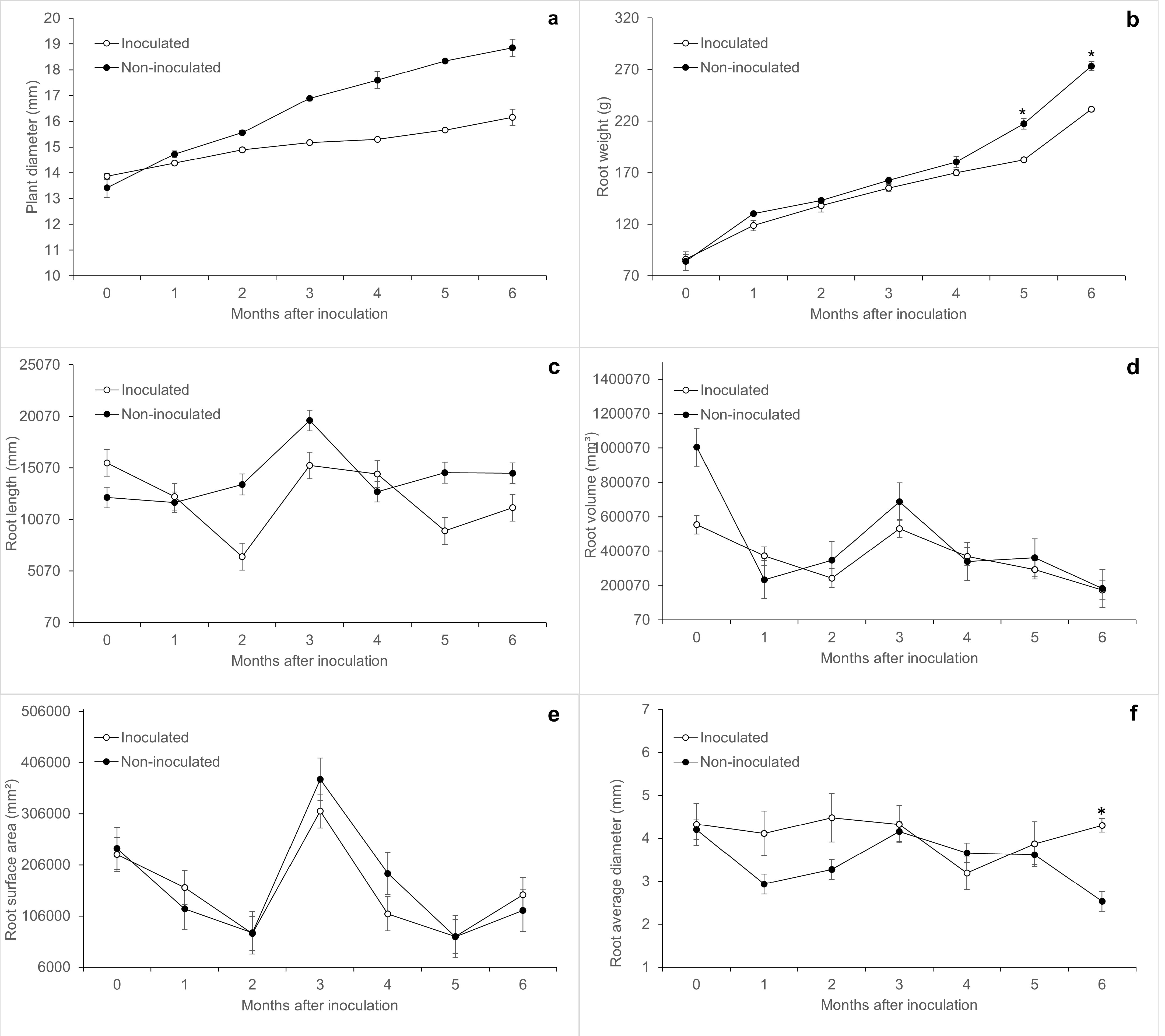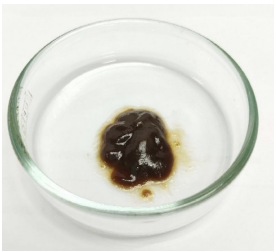The rubber tree (Hevea brasiliensis) is susceptible to attack by various fungal pathogens with Rigidoporus microporus being one of the most harmful. This fungus causes white root disease in rubber trees which can potentially lead to massive tree losses if left untreated. Loss of tappable trees ultimately results in reduced land productivity (kg/ha/year) in terms of latex yield. The management of this disease is challenging due to the below-ground nature of this disease making early detection difficult. This study investigated the effects of R. microporus infection on plant growth (plant diameter and root weight) and leaf gas exchange parameters and attempted to identify characters associated with below-ground disease progression. Seedlings were laid out in completely randomised design in greenhouse and artificially inoculated with R. microporus. Disease severity based on foliar and root symptoms (Figure 1) as well as plant growth measurements were conducted monthly for six months while leaf gas exchange parameters were recorded at zero, three and six months after inoculation (mai). Significant differences in plant growth between healthy and inoculated plants were identified two mai in terms of plant diameter and five mai in terms of root weight (Figure 2). Significant difference in leaf gas exchange parameters were detected as early as three mai. Net CO2 assimilation rate (A) and stomatal conductance to water vapour (gs) both showed highly significant negative correlation with root disease severity index (%). This strong correlation suggests the potential of A and gs to be used as early indicators for H. brasiliensis white root disease infection.

Figure 1: WRD disease severity index, DSI (%) curve based on foliar and root symptoms

Figure 2: Plant diameter (a), root weight (b), root length (c), root volume (d), root surface area (e), root average diameter (f), curve of H.brasiliensis with R. microporus
A. Maiden, N. Syd Ali, S. Atan and M. Y. Wong. (2022) Growth and physiological responses of Hevea brasiliensis to Rigidoporus microporus infection. Journal of Rubber Research (2022)
Tarikh Input: 29/07/2022 | Kemaskini: 04/04/2024 | ainzubaidah
PERKONGSIAN MEDIA




























